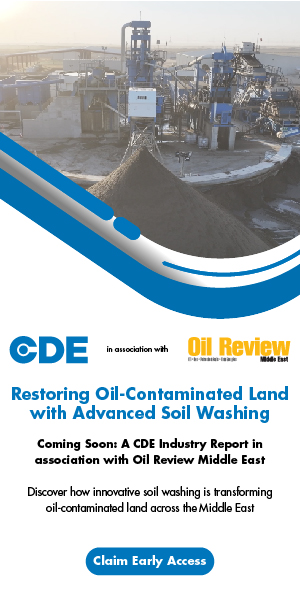SAUDI ARAMCO HAS announced that its research and development centre has built a truly unique instrument designed to identify oil by using a laser. The laser is used to excite the fluorescence spectra of oil within extremely short time frames — two to five nanoseconds. All the fluorescence data is coalesced, and two dimensional diagrams are produced. These act as oil spectral fingerprints.
p>SAUDI ARAMCO HAS announced that its research and development centre has built a truly unique instrument designed to identify oil by using a laser. The laser is used to excite the fluorescence spectra of oil within extremely short time frames — two to five nanoseconds. All the fluorescence data is coalesced, and two dimensional diagrams are produced. These act as oil spectral fingerprints.
The company says that there are many uses for spectral identification of oil. An obvious one is sorting crude oils from different grades and different commercial oils. Also oil spills can be fingerprinted and their grades identified based on the oil’s spectral characteristics uncovered by the device. This, says the company, had not been possible until now.
Similarly the device makes it possible to identify the ingredients of blended crude oils as well as blended refined oils in order to measure the blending ratios. In some cases the system can measure blending ratios down to 0.001 percent. This has obvious applications to quality control for refineries, multi-product distribution pipelines and pumping stations.
"We developed a truly unique, multipurpose laser instrument that is robust enough for field applications,” said Ezzat M Hegazi, senior research scientist and activity leader for designing and building the instrument. “It is easily transportable as is, but we're also working on a remote sensing version that can be used in helicopters to detect and identify oil spills and seepage into water."
The invention is an application generator with many uses and it has many more applications that will be developed based on the needs of different disciplines inside and outside of Saudi Aramco. A few applications other than crude-oil identification include:
- llegal cocktailing detection of fuel oils. The device can detect the illegal commercial blending of gasoline, diesel fuels and jet fuels.
- Drag reducing agent (DRA) measurements. DRA cuts the cost of fuel distribution in pipelines and the device can quickly and easily monitor DRA in pipelines and pumping stations.
- Oil exploration. The oil fingerprinting techniques can be used as an additional investigative tool for geological continuity assessment.
- Oil deterioration identification. Degradation of refined oils such as transformer oil and engine oil can be identified through the spectral fingerprints.
- Water-in-oil, emulsion and total sulfur measurements. Ongoing research is being carried out to use the device in detecting microscopic amounts of water and total sulfur in refined oils.
- Salt content monitoring in oil.
- Asphaltenes determination in crude oils.
- Viscosity monitoring in pipelines.
These techniques provide very convenient and fast (30 seconds per sample) measurement without resorting to any sample preparation. In some measurements, such as DRA contaminations, the instrument can detect sub PPM (part per million) levels by simply pushing a button.









